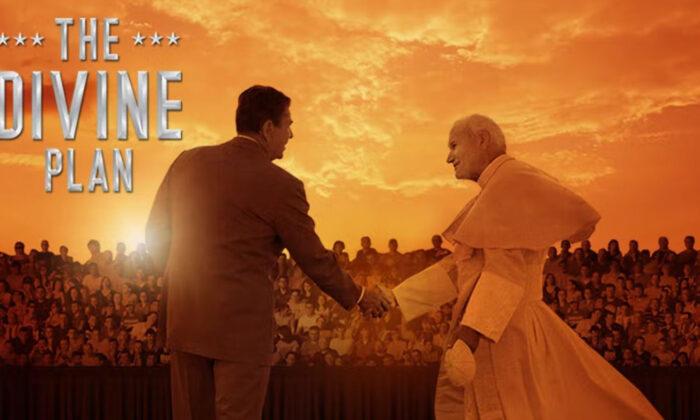Ably narrated by actor Peter Reznikoff, the documentary features a veritable plethora of fascinating interviews, as well as cartoon-like visuals that recreate many of the events that former President Ronald Reagan and Pope John Paul II faced in their individual lives, as well as after they had joined forces.
From the beginning of its first act, Reznikoff does a great job of piquing the interest of viewers and drawing them into the historic trajectories of these men, as well as defining the evil that they faced together—head-on.

This film is especially relevant these days as the Cold War was a period of profound geopolitical between East and West—particularly between the Soviet Union and the United States. Although the Soviet Union (also known as the “Evil Empire” as Reagan coined it in a famous 1983 speech) imploded in on itself back in 1991, the reemergence of Russia as a major world power has caused old tensions to be rekindled between it and the West.
Early on, it is pointed out that both President Reagan and Pope Paul II had similar traits. Both men came from an acting background, experiences that they used to parlay into becoming performers on much grander stages. And both also had an uncanny knack for taking complex information and disseminating it in layman’s terms—thus, making it understandable to the public at large.
Another unusual (and unfortunate) similarity between the world leaders is that both men were also the targets of assassination attempts within six weeks of one another, back in 1981.
The first attempt, on March 30, 1981, happened as President Reagan was leaving the Washington Hilton Hotel, having just completed a speaking engagement. Would-be assassin John Hinckley Jr. produced a gun and shot at Reagan and his entourage. Reagan was seriously injured by a ricocheting bullet.

The second attempt, which was perpetrated on St. John Paul on May 13, 1981, happened as the holy man greeted pilgrims in St. Peter’s Square in Vatican City. A Turkish mercenary named Mehmet Ali Ağca shot St. Paul twice, severely wounding him. Incredibly, the Pope later forgave Ağca, who then converted to Roman Catholicism.
Both Reagan and St. John cited God’s grace as being the element that enabled them to pull them through those difficult times. Through Divine Providence, they were able to go on the offensive against communism and eventually, destroy the Soviet Union.
Ultimately, both men realized that although each of them could play a role in charting out a new destiny for humanity, together, they could magnify their powers within their respective areas of influence. God provided them with the most expansive stage possible and they both seized the opportunity with humility, bravery, and good intentions.
The documentary shows the first meeting between Reagan and the Pope, which was on June 2, 1982. Although before that historic meeting, various American presidents had sent envoys to the Vatican to improve consular relations with the Papal States (between 1797 and 1867), Reagan became appointed as the first U.S. ambassador to the Holy See, which was a historic first.

The timing couldn’t have been better—the Polish Solidarity Movement (1980–1989), led by shipyard electrician Lech Walesa, was just picking up steam. The movement exposed the many lies espoused by the communists, including the false premise that it was a “free workers’ state.” This paved the way for the eventual dismantlement of the Soviet regime and all of its assorted cronies.
The documentary goes on to detail some of the other forces at work that led to the demise of the Soviet Union, with a wide range of interviews, archival footage, and artistic graphics to fill in the gaps where photographs were unavailable.
“The Divine Plan” is a well-produced documentary that sheds light on one of the most interesting pairings in recent history—that of the 40th President of the United States, Ronald Reagan, and Pope John Paul II. It’s not only historically significant and illuminating but covers a time when various forces converged to transform the entire world, and it could have gone either way—either for better or worse. Fortunately, good prevailed over evil, as it always does in the end.





